
hotline:
17715390137
Tel/Wechat:
18101240246 (Technology)
0512-68565571
Email:mxenes@163.com (Sales Engineer)bkxc.bonnie@gmail.com
Scan the code to follow or search the official account on WeChat:
2D Materials Fronrier After paying attention,
click on the lower right corner to contact us,
Enter enterprise WeChat.
Professional Services Online


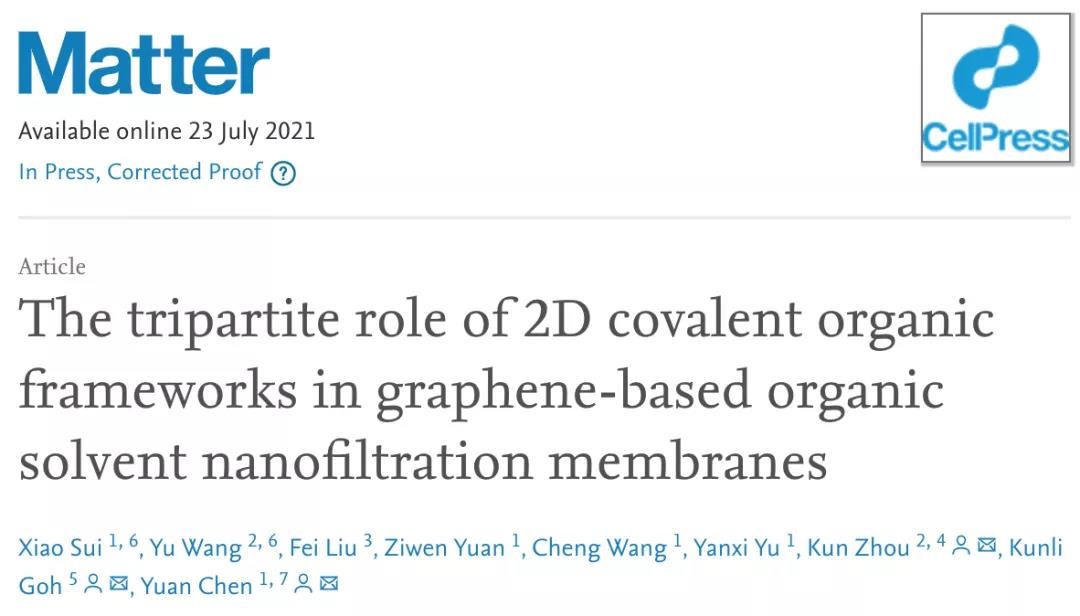
文章信息
Article information
The triple role of two-dimensional COF in graphene organic separation nanofiltration membrane First author: Sui Xiao, Wang Yu Corresponding author: Chen Yuan*, Wu Kunli*, Zhou Kun* Affiliation: University of Sydney, Singapore Membrane Science Research Center, Nanyang Technological University University
Research Background
The separation of organic matter is very important for pharmaceuticals, catalysis and petrochemicals. Compared with traditional polymer membranes, graphene membranes are more stable in organic systems, so they are considered to be very attractive materials in organic separations. However, the graphene film has a low solution flux due to the narrow and tortuous interlayer spacing. Previous studies have shown that inserting a two-dimensional covalent organic framework (COF) into a graphene membrane as an interlayer spacer can increase the layer spacing of the membrane to improve flux. This newly published work found that two-dimensional COF is not only a spacer, but also a triple function of spacer, stabilizer and porous filler in the graphene membrane of the organic separation system through a combination of experiments and calculations. After inserting a two-dimensional COF, the improvement of membrane performance is mainly due to the role of COF as a stabilizer and porous filler, rather than the role of spacers as previously thought. This new view will help the future design and application of two-dimensional material thin films for organic separation systems.
Article Introduction
Based on this, Professor Chen Yuan from the University of Sydney, in collaboration with Dr. Wu Kunli and Professor Zhou Kun from Nanyang Technological University, Singapore, published an article titled "The tripartite role of 2D covalent organic frameworks in graphene-based organic solvent nanofiltration membranes" on Matter. Break through the conventional view of the role of two-dimensional COF in graphene film (rGO), and analyze the triple role of COF in graphene film for organic separation.
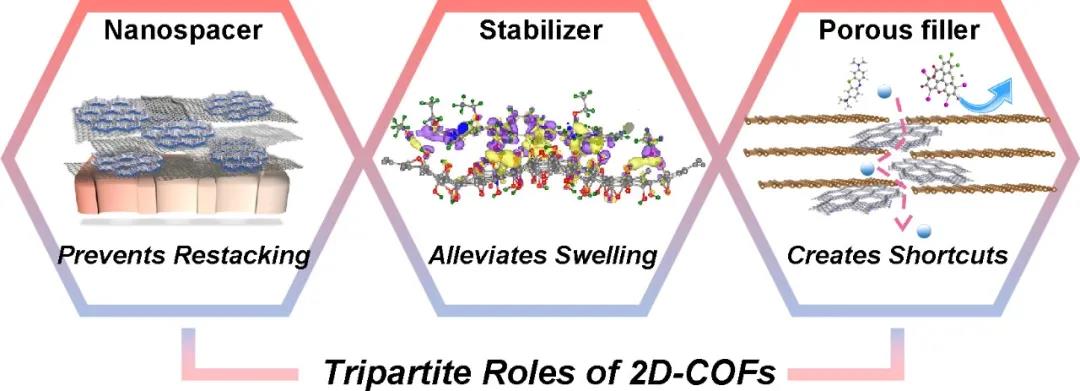
Figure 1. The triple role of two-dimensional COF in graphene films.
Highlights of this article
The two-dimensional COF and rGO hybrid film can be prepared by pressure filtration. This method can easily prepare the hybrid film.
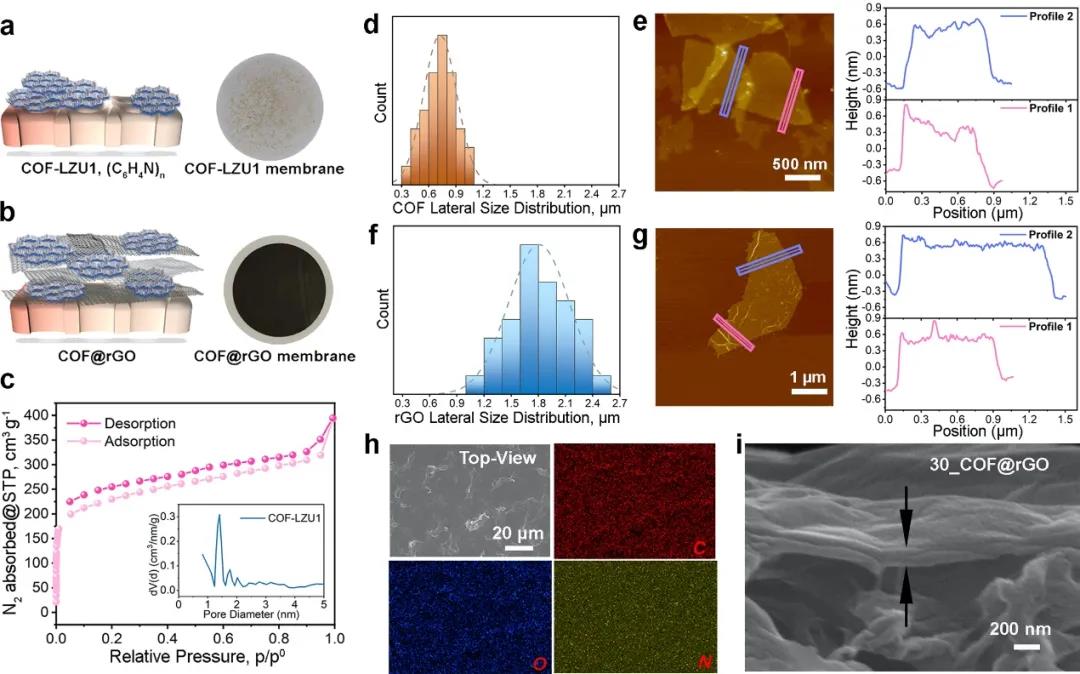
The performance of the hybrid film with two-dimensional COF inserted under different organic solvent systems is higher than that of the pure rGO film without COF inserted.
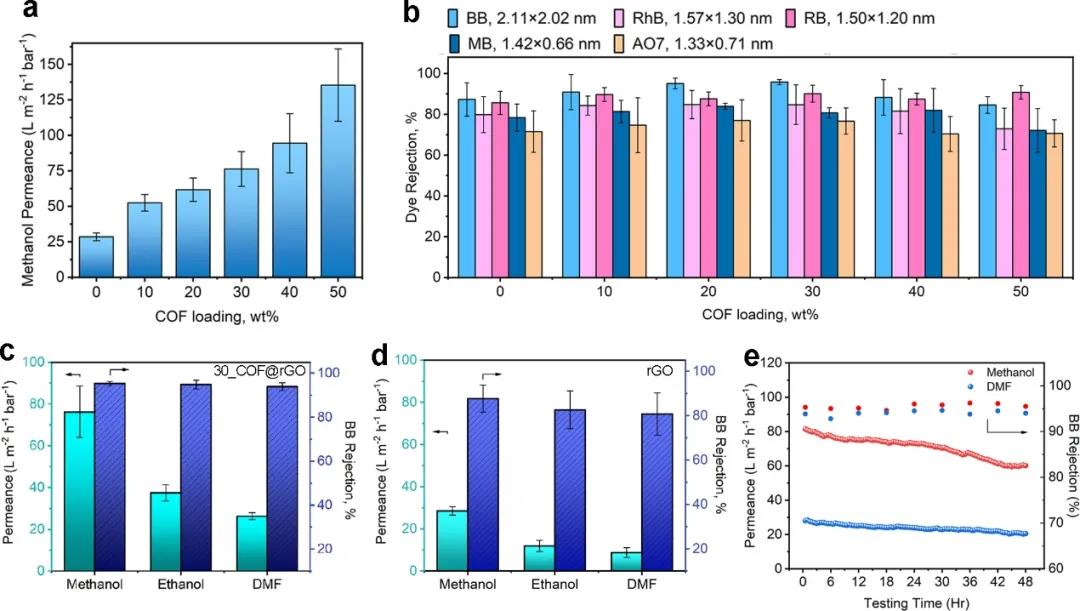
The XRD results show that under dry conditions, the interlayer spacing of the hybrid film with COF inserted is greater than that of the pure rGO film. However, in different organic solvents, the interlayer spacing of the COF-inserted hybrid film is not greater than that, but is smaller or close to the interlayer spacing of the pure rGO film. This indicates that the insertion of COF can alleviate the swelling of the interlayer spacing in organic solvents, thereby enhancing stability. In addition, the flux of the solvent is closely related to the viscosity and dielectric constant of the solvent.
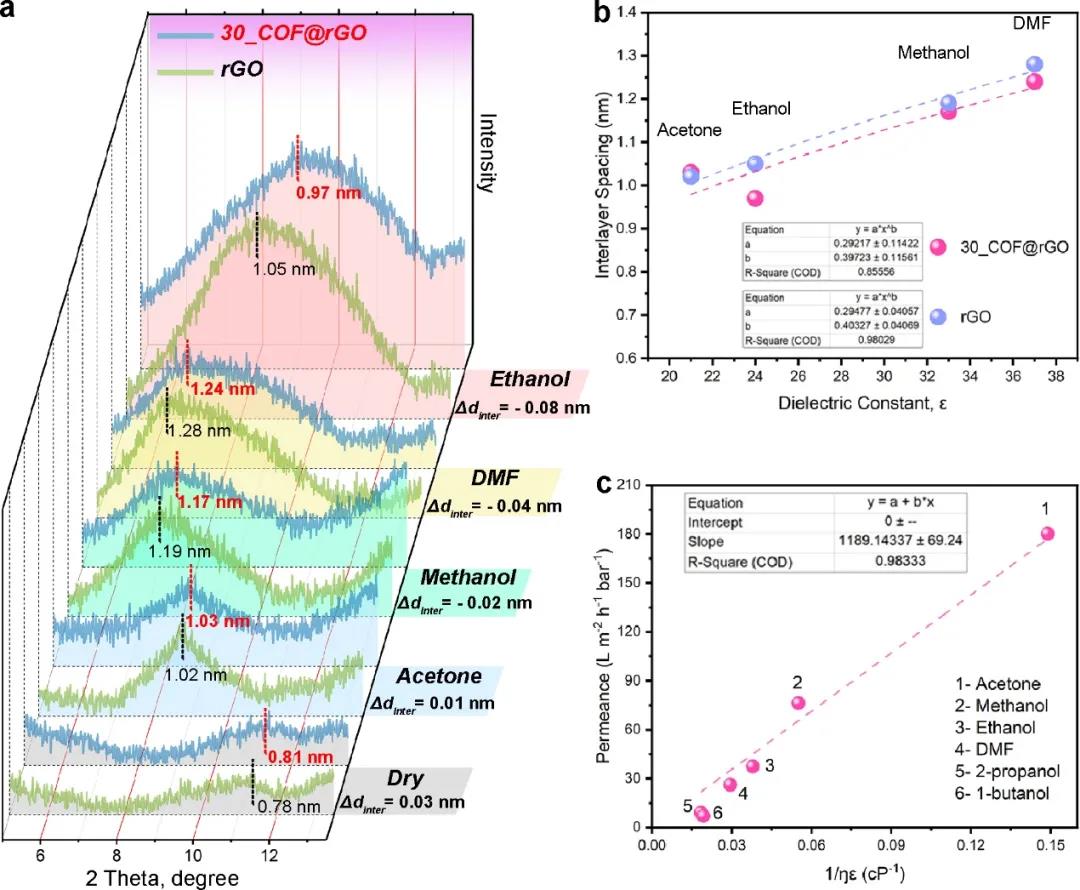
The calculation results show that COF can alleviate the swelling of rGO layer spacing in organic solvents because the solution induces the rearrangement of charges on the COF/rGO interface. This charge arrangement leads to an attractive force between COF and rGO. And the attractive force in different solvents is different, which leads to the difference of the interlayer spacing in different solvents.
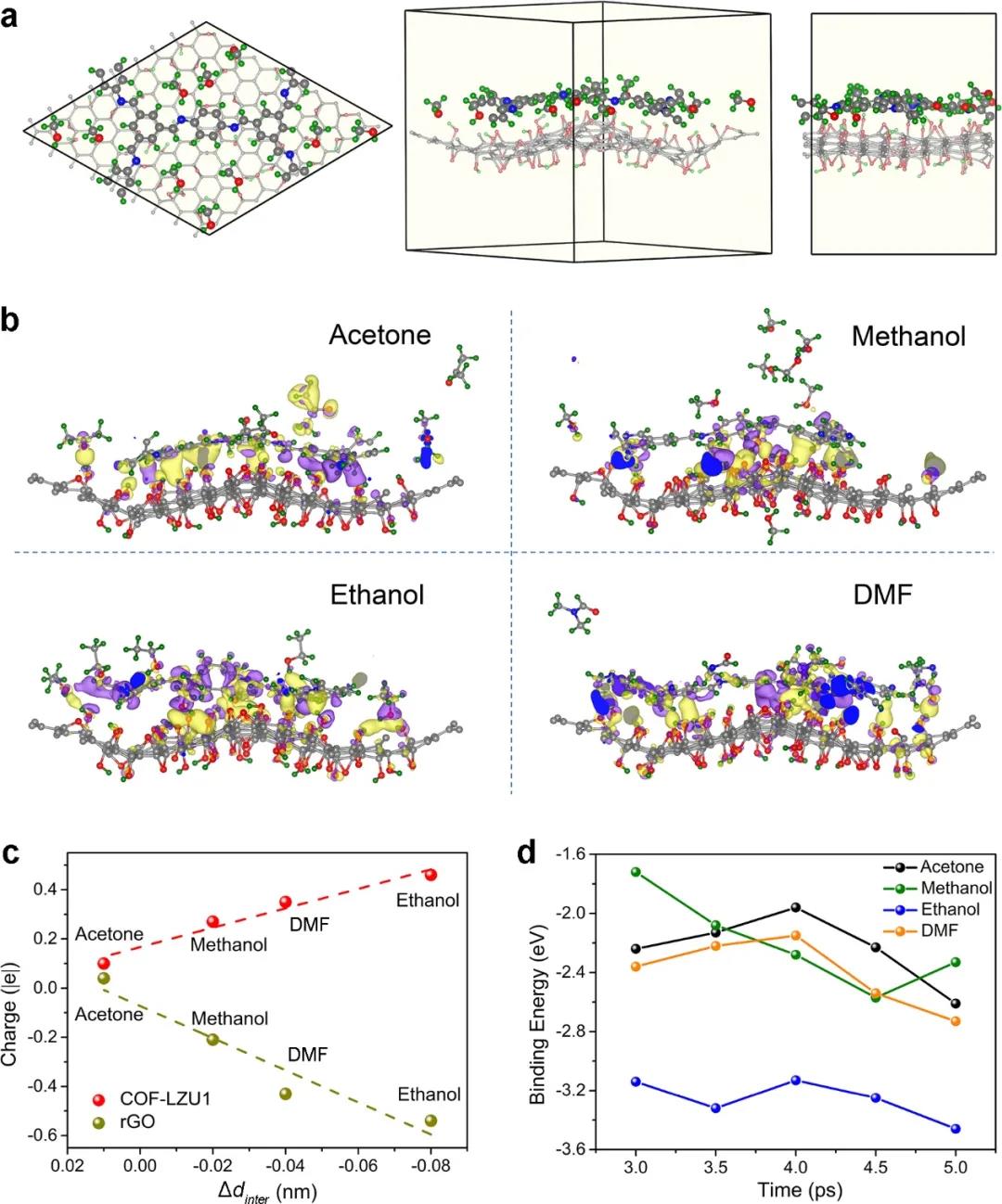
In addition, because COF has a small sheet size and porous structure, the length of the molecular transport channel is greatly reduced, thereby increasing the flux of the membrane.
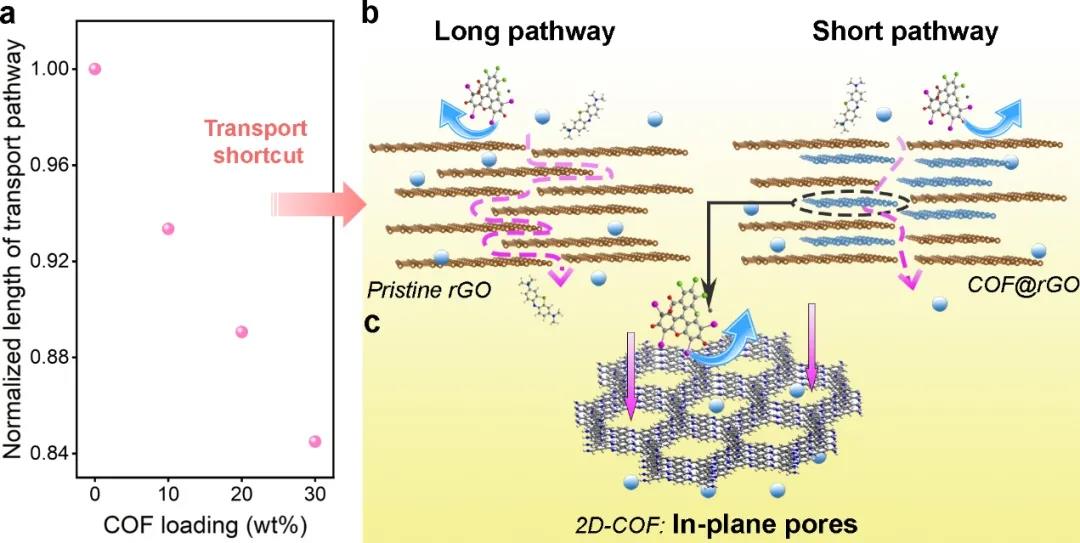
Article summary
This article investigates the triple role of two-dimensional COF in rGO films through experiments and calculations. When the film is dry, COF acts as a spacer to increase the interlayer spacing of the rGO film; when it is infiltrated in a solvent, an attractive force between COF and rGO is generated due to the redistribution of the interfacial charge. At this time, the COF is stabilized in the rGO film. In addition, the small-sized porous COF provides a shorter transmission channel to increase the flux of the membrane. At this time, the COF acts as a porous filler. Considering that COFs with similar properties can play multiple roles, the views in this article can provide more comprehensive guidance for the design of two-dimensional hybrid thin films in the future.
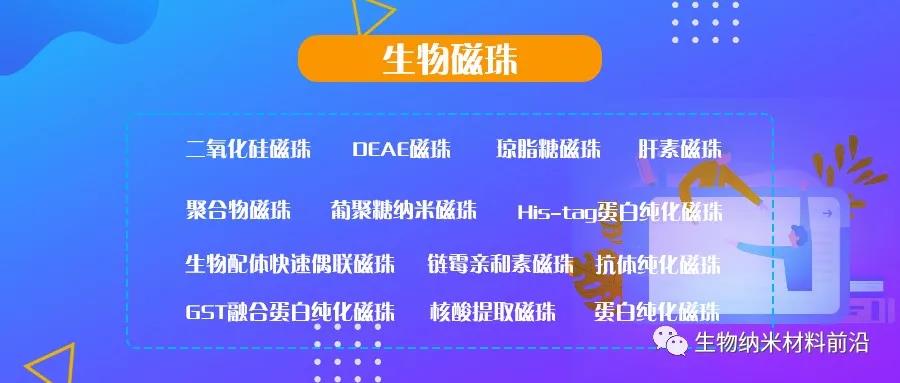
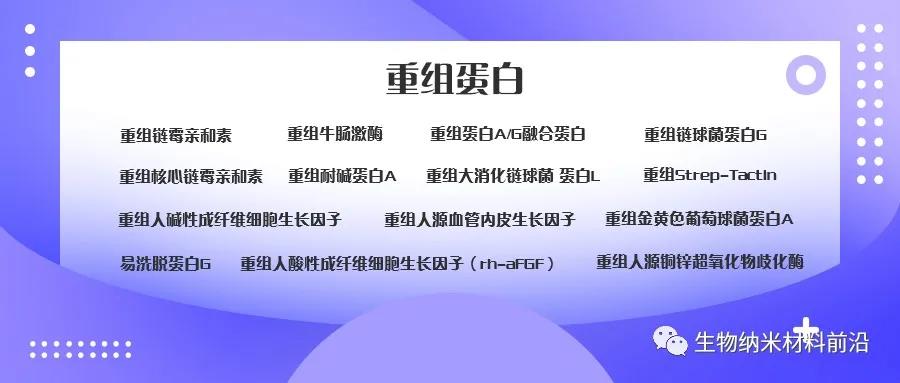
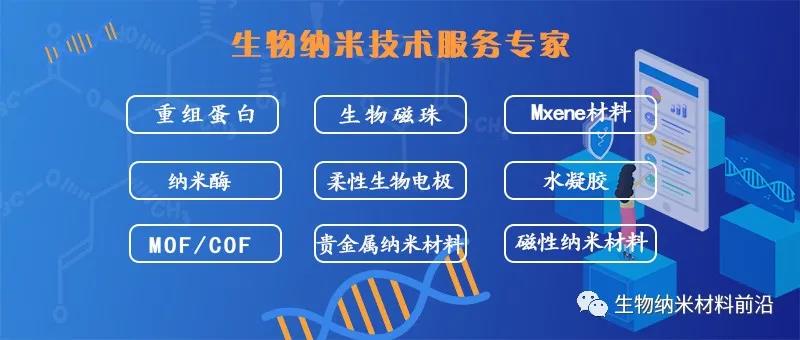
This information is sourced from the Internet for academic exchanges. If there is any infringement, please contact us and delete it immediately

| Reminder: Beijing Beike New Material Technology Co., Ltd. supplies products only for scientific research, not for humans |
| All rights reserved © 2019 beijing beike new material Technology Co., Ltd 京ICP备16054715-2号 |